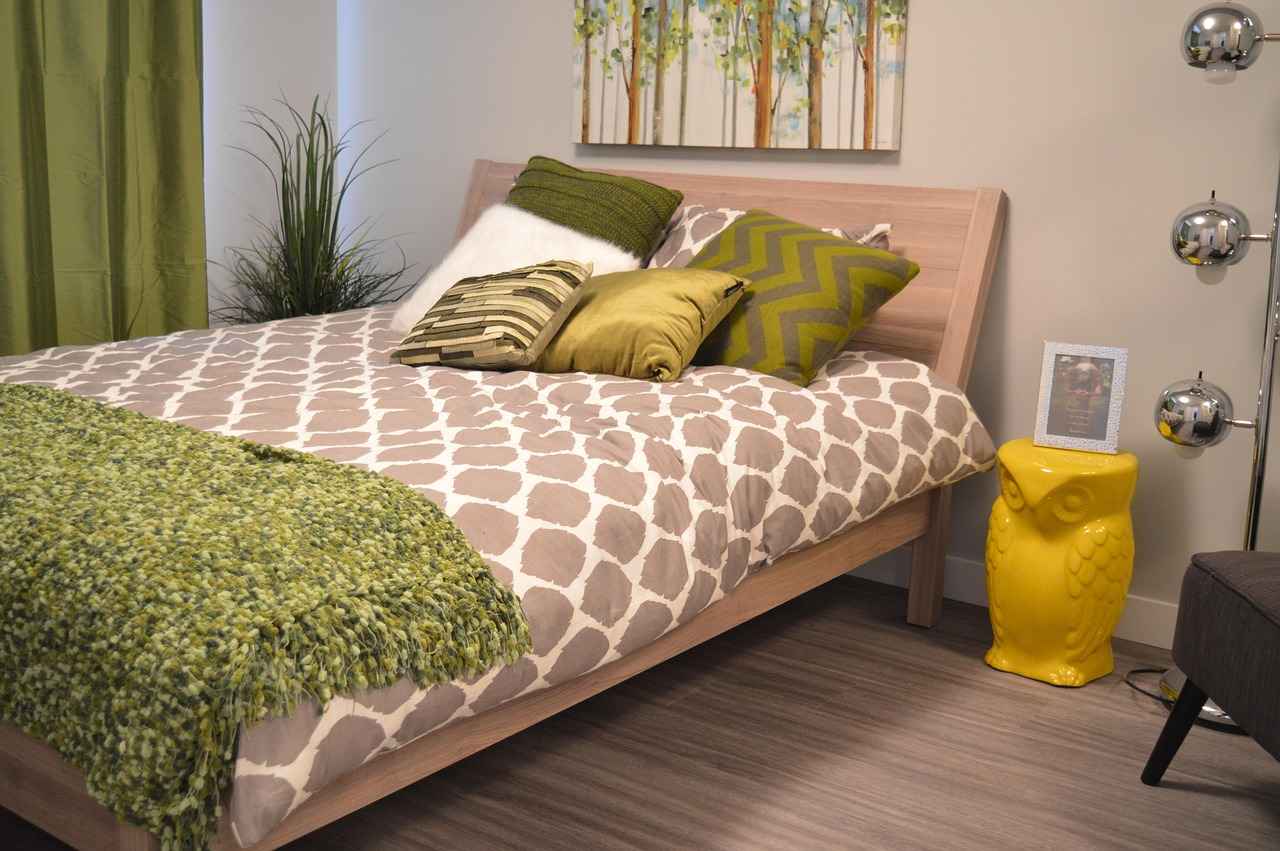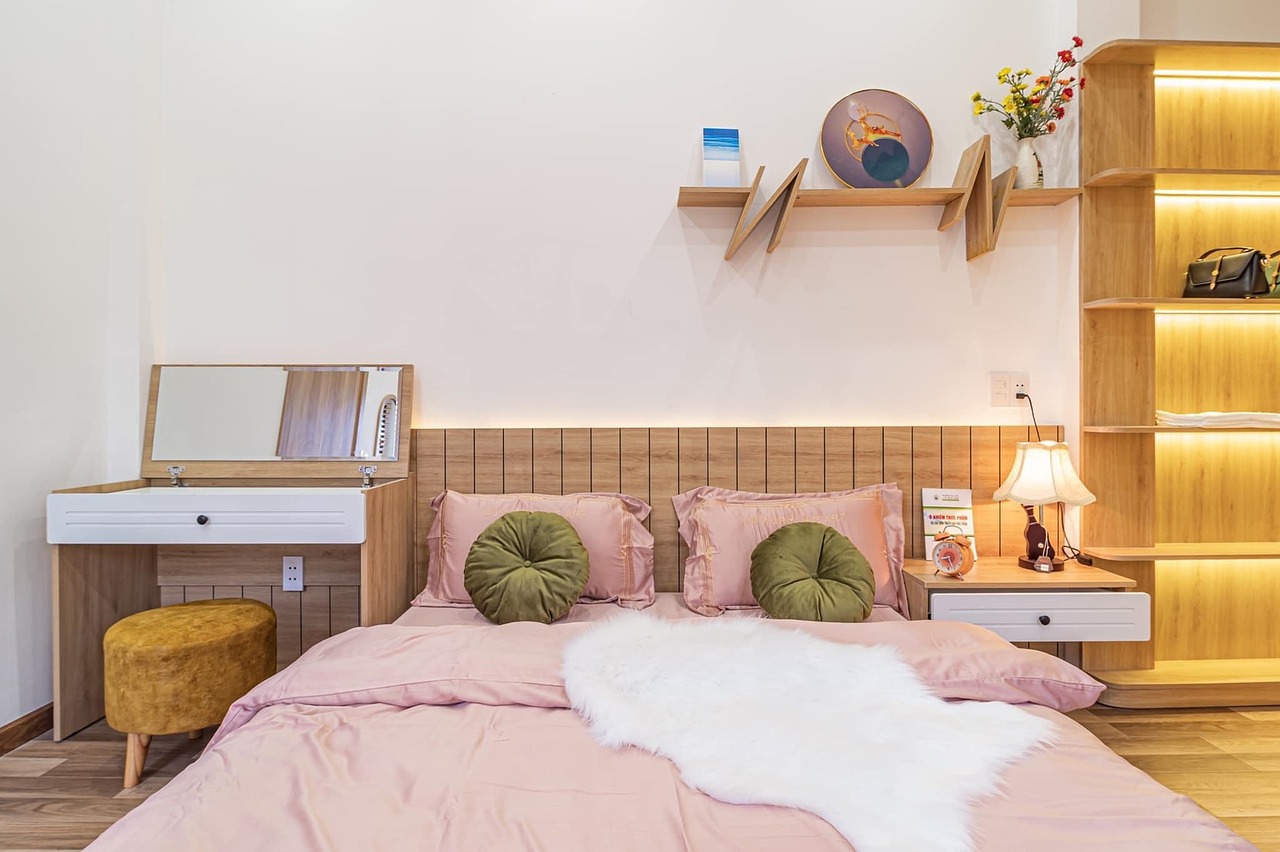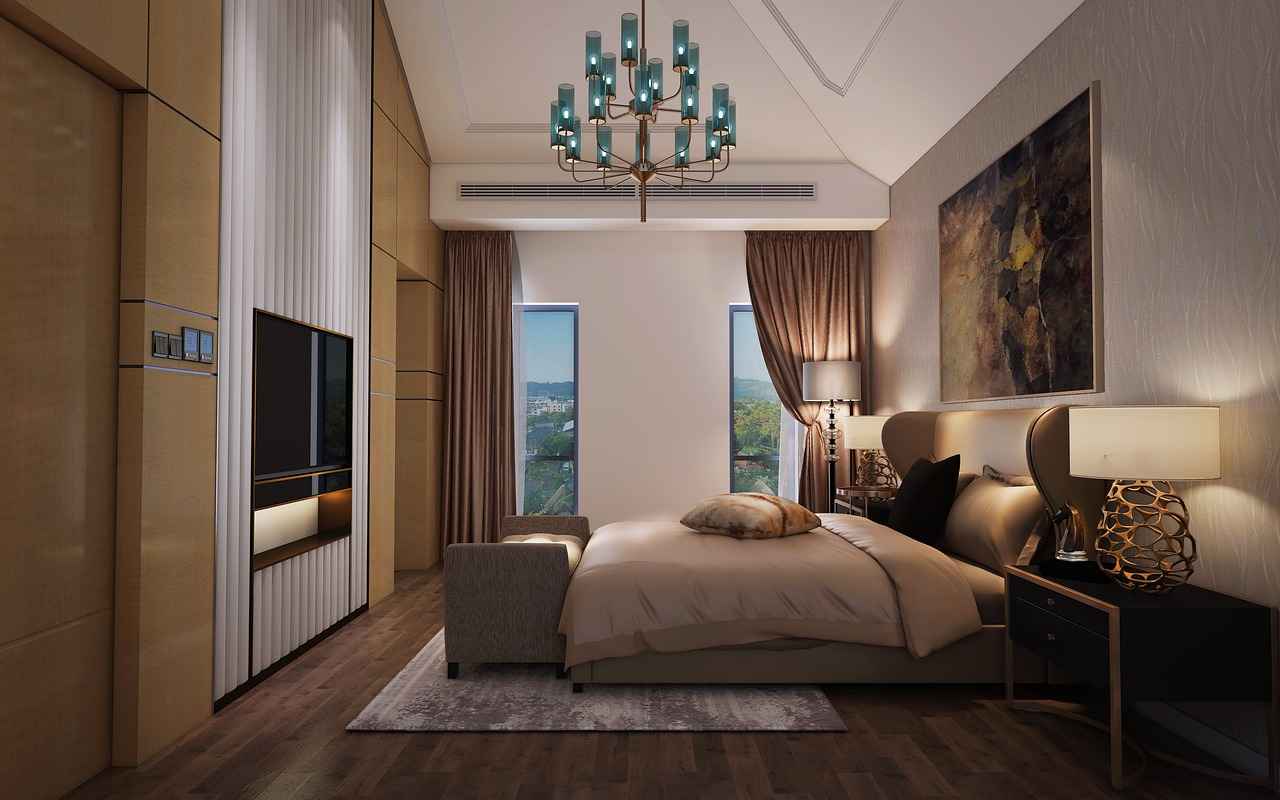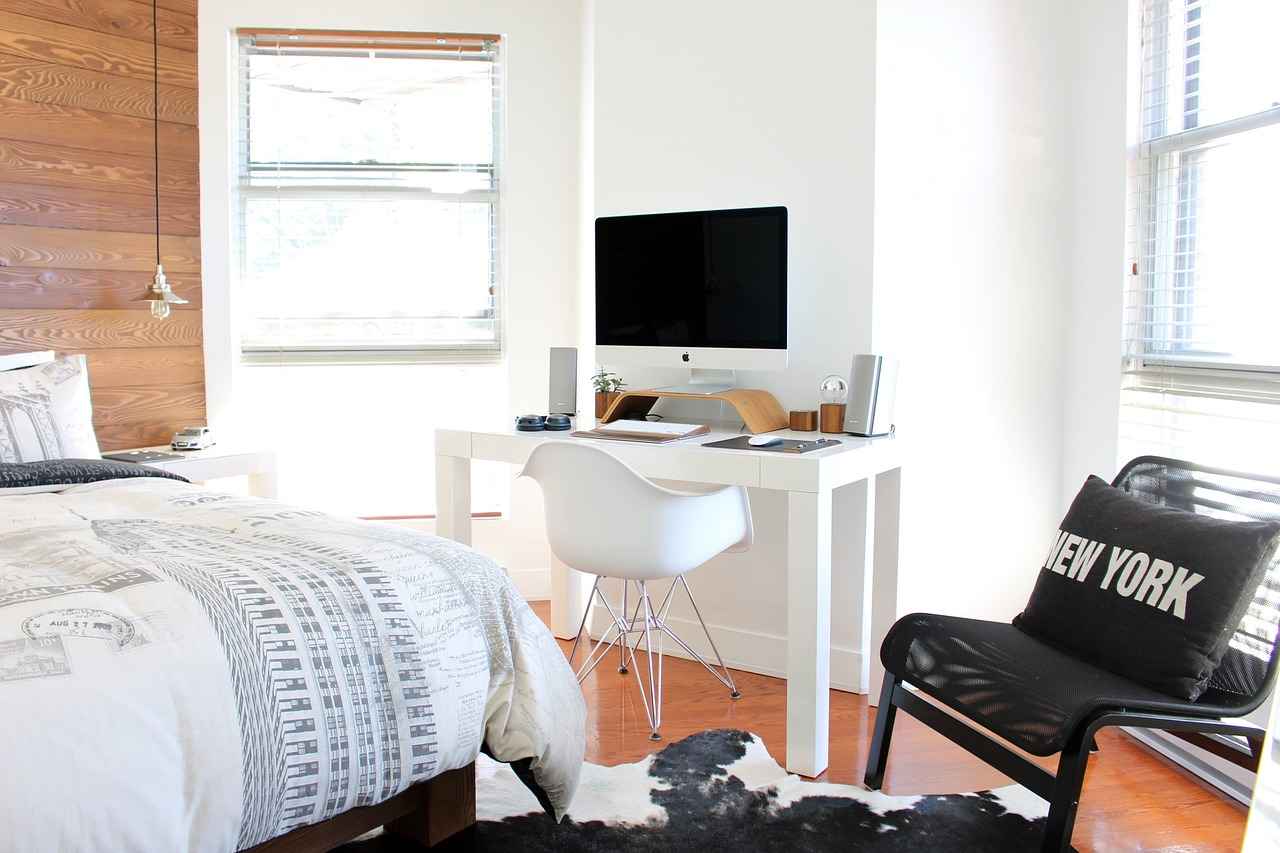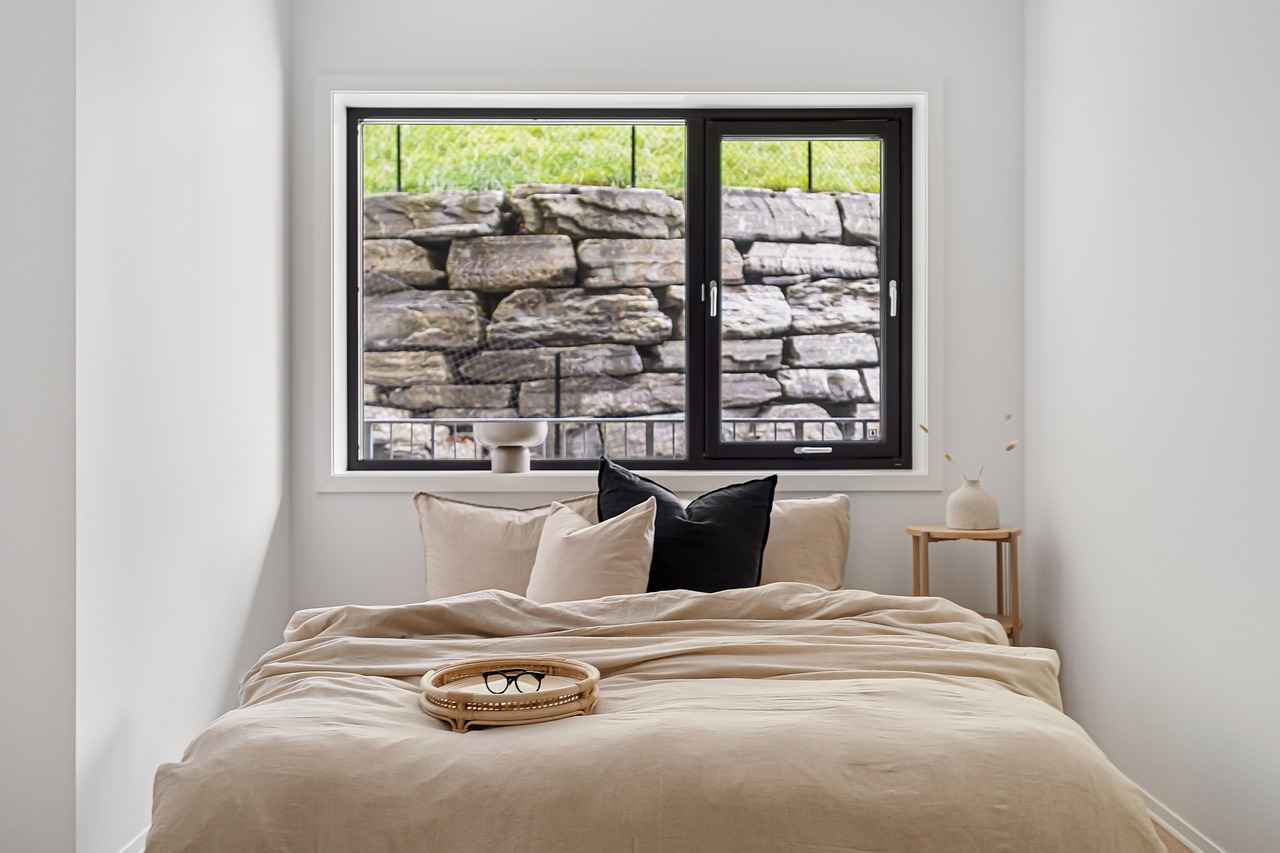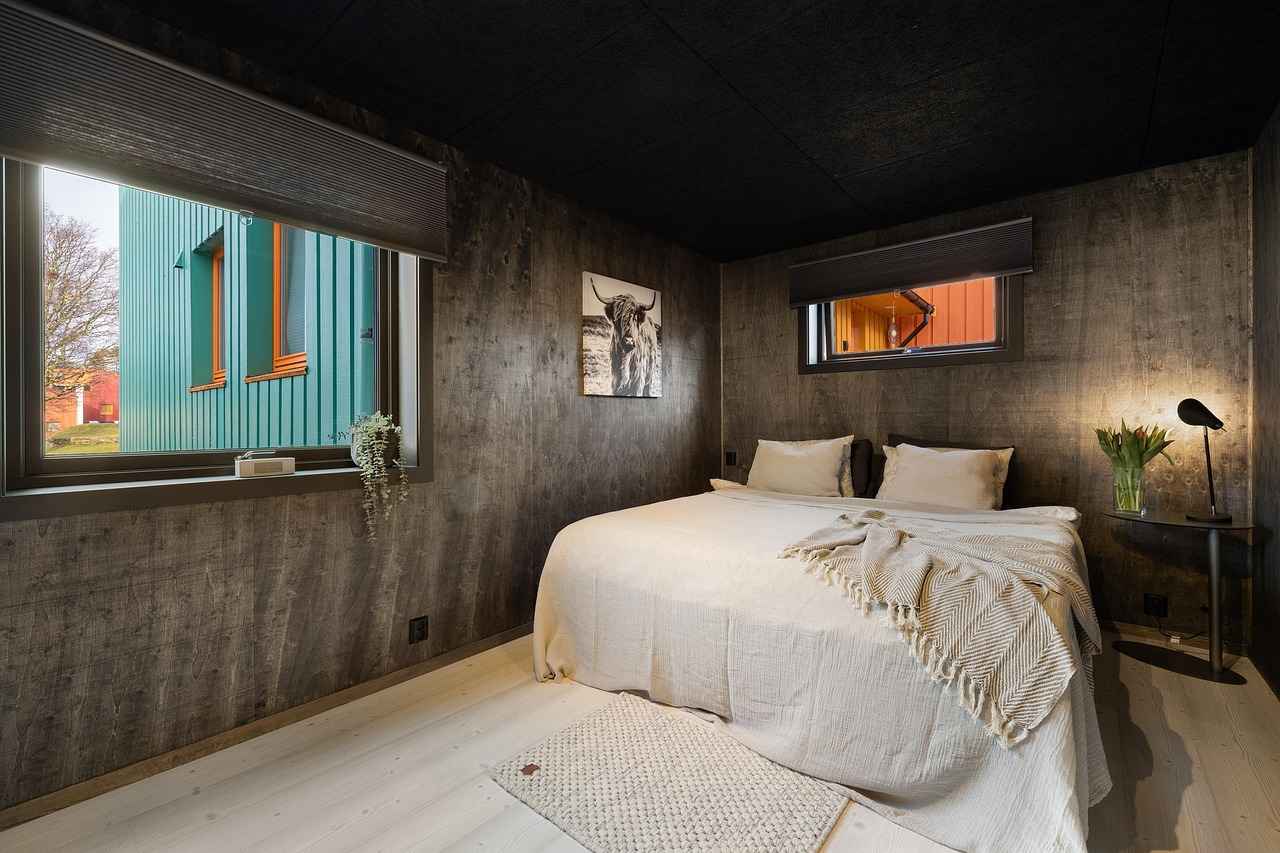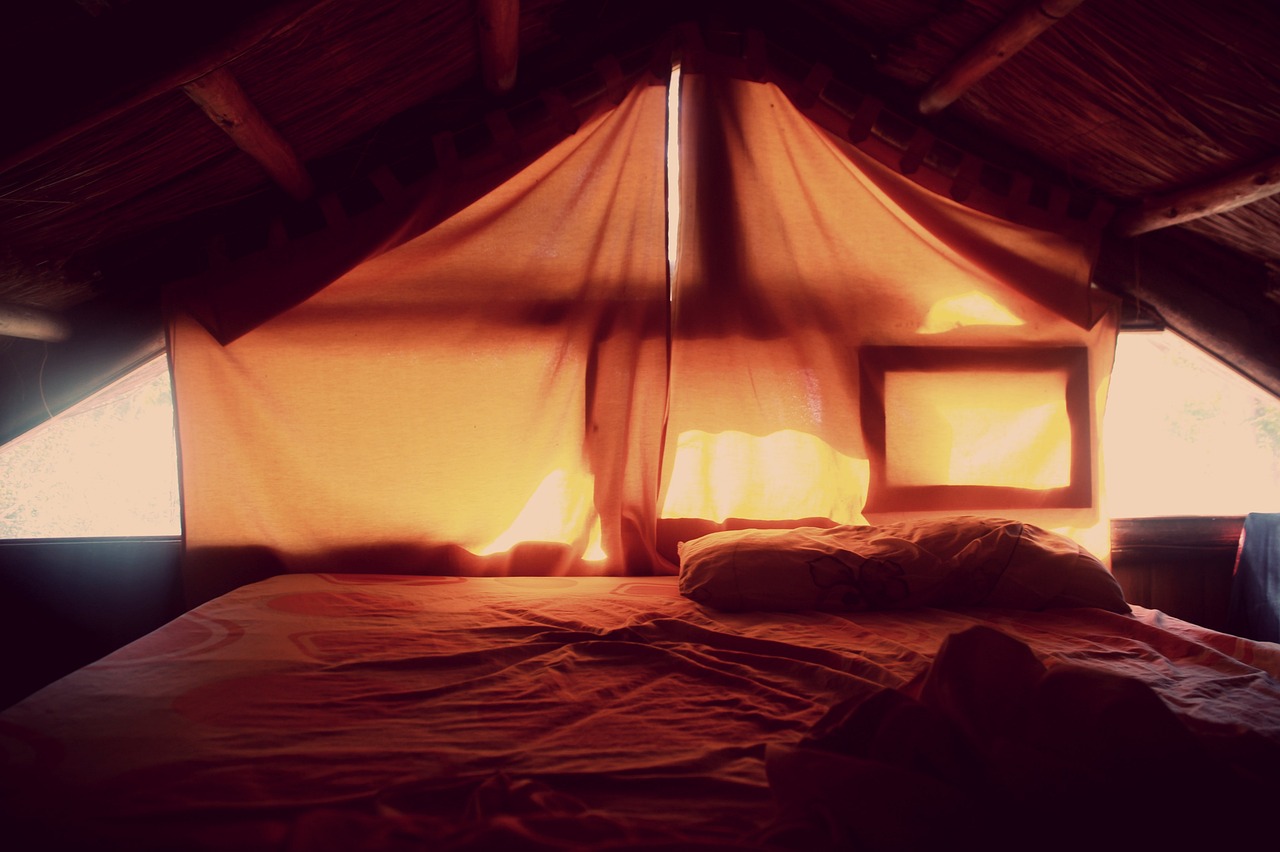Explore innovative headboard cushion designs that enhance both comfort and aesthetics in your bedroom. This article provides practical insights and creative ideas to transform your sleeping space into a stylish sanctuary.
1. Understanding the Importance of Headboard Cushions
Headboard cushions are not just decorative elements; they serve a critical role in providing comfort and support while you relax in bed. They can significantly enhance the overall look of your bedroom, making it feel more inviting and cozy.
2. Popular Materials for Headboard Cushions
Choosing the right material is crucial for both durability and comfort. Common options include:
- Fabric: Soft and versatile, available in various colors and patterns.
- Leather: Offers a sleek look and is easy to clean, but can be more expensive.
- Foam: Provides excellent support and can be covered with different fabrics for a tailored look.
3. Fabric Choices: Pros and Cons
Different fabrics come with unique benefits:
- Cotton: Breathable and easy to maintain.
- Velvet: Luxurious feel but may require special care.
- Microfiber: Durable and stain-resistant, ideal for busy households.
4. Eco-Friendly Materials for Sustainability
As sustainability becomes more important, consider eco-friendly materials such as organic cotton or recycled fabrics. These options not only look good but also contribute to a healthier planet.
5. DIY Headboard Cushion Ideas
Creating your own headboard cushion can be a fulfilling project. Here are a few simple ideas:
- Use plywood as a base, cover it with foam, and wrap it in your favorite fabric.
- Add buttons for a tufted look, enhancing both style and comfort.
- Incorporate storage by building a cushioned headboard with shelves.
6. Maintenance Tips for Longevity
To keep your headboard cushions looking fresh:
- Regularly vacuum to remove dust and debris.
- Spot clean stains immediately to prevent permanent damage.
- Rotate cushions periodically to ensure even wear.
Conclusion
Headboard cushions are a fantastic way to enhance both the comfort and style of your bedroom. By understanding the materials, designs, and maintenance tips, you can create a sleeping space that is not only functional but also a true reflection of your personal style.

1. Understanding the Importance of Headboard Cushions
Headboard cushions play a significant role in enhancing not only the comfort of your sleeping area but also the overall aesthetic of your bedroom. They serve as a supportive barrier when sitting up in bed, allowing you to enjoy reading or watching television without straining your back. Moreover, these cushions can be a stylish addition, complementing the decor and creating a cozy atmosphere.
When selecting headboard cushions, it is essential to consider their functionality and design. A well-chosen cushion can transform your bedroom into a sanctuary, providing both comfort and visual appeal. Understanding the importance of these cushions helps you make informed choices that align with your personal style and needs.
Headboard cushions come in various designs, sizes, and materials, allowing you to tailor them to your specific preferences. For instance, a plush velvet cushion can add a touch of luxury, while a simple cotton cushion may offer a more casual vibe. Additionally, the thickness and density of the cushion can affect how comfortable it feels when leaning against it.
Incorporating headboard cushions into your bedroom decor not only enhances comfort but also provides an opportunity for creativity. You can choose colors and patterns that reflect your personality, making your space feel uniquely yours. Consider mixing and matching different styles to create a layered look that adds depth to your room.
Ultimately, understanding the importance of headboard cushions allows you to select options that enhance both comfort and style. By considering factors such as material, design, and color, you can create a harmonious and inviting bedroom environment that meets your needs.
| Material | Comfort Level | Style |
|---|---|---|
| Cotton | Medium | Casual |
| Velvet | High | Luxurious |
| Leather | Medium | Modern |
- Choose cushions that match your bedroom color scheme.
- Consider the thickness for optimal support.
- Mix different materials for a unique look.

2. Popular Materials for Headboard Cushions
Choosing the right material for your headboard cushion is essential for both durability and comfort. The material you select can significantly influence the overall aesthetic and functionality of your bedroom. Below, we will explore various options, including fabric, leather, and foam, to help you find the best fit for your unique style.
| Material Type | Pros | Cons |
|---|---|---|
| Fabric |
|
|
| Leather |
|
|
| Foam |
|
|
When selecting a material, consider your lifestyle and personal preferences. For instance, if you have pets or children, a sturdy leather or easy-to-clean fabric might be a better choice. Conversely, if you prioritize comfort and aesthetics, a soft fabric or high-density foam may be more appealing.
Ultimately, the right material for your headboard cushion will enhance not only the comfort of your sleeping space but also its overall style and functionality. Take the time to explore your options and choose wisely!
3. Fabric Choices: Pros and Cons
Fabric Choices: Pros and Cons
When selecting a headboard cushion, the choice of fabric plays a crucial role in determining both the comfort and style of your bedroom. Each fabric type comes with its own set of advantages and disadvantages, impacting not only aesthetics but also maintenance and durability. Below, we delve into some of the most popular fabric options, including cotton, velvet, and microfiber, to help you make an informed decision.
- Cotton:
Cotton is a natural fiber known for its breathability and softness. It is available in various colors and patterns, making it a versatile choice for any decor. However, cotton can be prone to wrinkling and may require more frequent washing to maintain its appearance.
- Velvet:
Velvet offers a luxurious feel and rich texture, adding a touch of elegance to your space. It is durable and resistant to wear, making it suitable for high-use areas. On the downside, velvet may attract dust and require special cleaning to keep it looking its best.
- Microfiber:
Microfiber is a synthetic fabric that is stain-resistant and easy to clean, making it a practical option for families or pet owners. Its softness and durability are appealing, but it may not have the same luxurious feel as natural fibers like cotton or velvet.
In conclusion, when choosing a fabric for your headboard cushion, consider your personal style, the level of maintenance you are willing to undertake, and the overall durability you desire. Each fabric has its unique qualities, and understanding these can help you select the perfect option for your bedroom sanctuary.
4. Leather vs. Fabric: Which is Better?
The choice between leather and fabric headboard cushions is a significant decision that can impact both the **aesthetic** and **comfort** of your bedroom. Each material offers distinct advantages and disadvantages, making it essential to consider your personal preferences and lifestyle needs.
Leather Headboard Cushions
- Durability: Leather is known for its longevity. It can withstand wear and tear, making it an excellent investment for those who want a lasting piece.
- Easy Maintenance: Leather is relatively easy to clean. A simple wipe with a damp cloth can remove dust and spills, keeping it looking pristine.
- Luxurious Appeal: Leather adds a touch of elegance and sophistication to any room. It can elevate the overall decor, making it a popular choice for modern and upscale designs.
Fabric Headboard Cushions
- Variety of Options: Fabric cushions come in a multitude of colors, patterns, and textures, allowing for greater customization to match your bedroom decor.
- Comfort: Many fabrics, like velvet or cotton, offer a soft and cozy feel, enhancing the overall comfort of your headboard.
- Affordability: Generally, fabric headboards are more budget-friendly compared to leather options, making them accessible for various price points.
Ultimately, the decision between leather and fabric headboard cushions should be based on your individual needs and lifestyle. If you prioritize durability and elegance, leather may be the better choice. However, if you seek comfort, variety, and affordability, fabric could be the way to go. Consider your bedroom’s overall theme and your personal preferences to make the best decision for your space.
5. Eco-Friendly Materials for Sustainability
Eco-Friendly Materials for Sustainability
In recent years, the demand for sustainable materials in home decor has surged, reflecting a growing awareness of environmental issues. When it comes to headboard cushions, there are numerous eco-friendly options that not only enhance the aesthetic of your bedroom but also contribute to a healthier planet.
One of the most popular sustainable materials is organic cotton. Unlike conventional cotton, which requires harmful pesticides and fertilizers, organic cotton is grown without these chemicals, making it a safer choice for both the environment and your home. Additionally, it offers a soft and breathable surface for headboard cushions, ensuring maximum comfort.
Bamboo fabric is another excellent option. Known for its natural antibacterial properties, bamboo is also highly renewable, as it grows quickly and requires minimal water. Cushions made from bamboo are not only stylish but also promote a healthier indoor environment.
For those seeking a more luxurious feel, recycled polyester can be an ideal choice. Made from recycled plastic bottles, this material reduces waste and conserves resources. It is durable and easy to clean, making it a practical option for headboard cushions.
Moreover, natural latex is an outstanding sustainable choice for cushioning. Harvested from rubber trees, natural latex is biodegradable and offers excellent support and comfort. Its resilience ensures that your headboard cushion will maintain its shape over time.
Incorporating these eco-friendly materials into your home decor not only enhances the look of your space but also aligns with a commitment to sustainability. As consumers become more environmentally conscious, choosing sustainable headboard cushions can significantly impact the overall decor of your bedroom.
In conclusion, opting for sustainable materials in home decor is a step towards a more eco-conscious lifestyle. By selecting headboard cushions made from organic cotton, bamboo, recycled polyester, or natural latex, you can enjoy style and comfort while contributing to a healthier planet.
6. Foam Density and Comfort Levels
Foam Density and Comfort Levels play a crucial role in the overall comfort of headboard cushions. Choosing the right foam density can greatly enhance your sleeping experience and support your back effectively.
The density of foam refers to the weight of the foam per cubic foot. It is a key factor in determining how supportive and durable the cushion will be. Generally, foam density is categorized into three main types: low-density, medium-density, and high-density foam. Understanding these categories is essential for making an informed choice.
- Low-Density Foam: Typically weighing less than 1.5 pounds per cubic foot, this type of foam is often softer and less durable. While it may feel comfortable initially, it tends to wear out quickly and may not provide adequate support over time.
- Medium-Density Foam: Ranging from 1.5 to 2.5 pounds per cubic foot, medium-density foam strikes a balance between comfort and support. It is suitable for most users and offers a good lifespan, making it a popular choice for headboard cushions.
- High-Density Foam: With a weight of over 2.5 pounds per cubic foot, high-density foam provides exceptional support and durability. It is ideal for individuals who require extra back support, especially for those who spend extended periods sitting up in bed.
When selecting headboard cushions, consider your personal comfort preferences and any specific back support needs. A well-chosen foam density can significantly improve your overall sleep quality and help prevent discomfort.
In conclusion, understanding the impact of foam density is essential for selecting headboard cushions that not only enhance the aesthetic appeal of your bedroom but also provide the necessary support for a restful night’s sleep. By carefully evaluating your options, you can create a comfortable and stylish sanctuary that meets your needs.

7. Design Styles: Modern vs. Traditional
When it comes to headboard cushions, the design plays a crucial role in shaping the overall ambiance of your bedroom. Understanding the differences between modern and traditional styles can help you select the perfect headboard cushion that complements your decor.
Modern Headboard Cushions
- Sleek Lines: Modern headboard cushions are characterized by their clean, sleek lines and minimalist designs. They often feature geometric shapes and a more understated aesthetic.
- Bold Colors: These cushions frequently use bold, vibrant colors or monochromatic palettes to create a striking focal point in the room.
- Materials: Modern designs often incorporate materials like leather, faux leather, or innovative fabrics that provide a contemporary feel.
Traditional Headboard Cushions
- Ornate Details: Traditional headboard cushions tend to feature ornate details, such as tufting, embroidery, or intricate patterns that evoke a sense of classic elegance.
- Warm Colors: The color schemes for traditional cushions are often warm and inviting, utilizing rich tones like burgundy, navy, or earthy hues.
- Classic Fabrics: Fabrics such as velvet, brocade, or cotton are commonly used in traditional designs, adding a touch of luxury and comfort.
When choosing between modern and traditional headboard cushions, consider the overall style of your bedroom. A modern cushion may suit a contemporary space, while a traditional option can enhance a classic or vintage-themed room. Ultimately, the right choice will reflect your personal taste and complement your existing decor.
In conclusion, whether you prefer the clean lines of modern design or the rich textures of traditional styles, headboard cushions offer a versatile way to enhance your bedroom’s aesthetic. Explore various options to find the perfect match for your unique style.
8. Color Schemes and Patterns
Choosing the right color scheme and patterns for your bedroom is an essential aspect of interior design that can significantly influence the overall ambiance and aesthetic appeal of your space. The colors you select can evoke emotions, create a sense of harmony, and even affect your mood. Therefore, it is crucial to understand how to effectively choose colors that enhance your bedroom’s aesthetic.
- Understanding Color Psychology: Different colors can have varying psychological effects. For instance, blue is often associated with calmness and serenity, making it a popular choice for bedrooms. On the other hand, yellow can bring warmth and energy, perfect for a cheerful environment.
- Creating a Cohesive Palette: When selecting a color scheme, consider creating a cohesive palette that includes a primary color, secondary color, and an accent color. This approach helps to ensure that all elements in the room work harmoniously together.
- Incorporating Patterns: Patterns can add visual interest to your bedroom. From floral designs to geometric shapes, incorporating patterns in your bedding, curtains, or rugs can enhance the overall look. However, it’s essential to balance patterns with solid colors to avoid overwhelming the space.
- Considering Natural Light: The amount of natural light your bedroom receives can greatly affect how colors appear. Lighter colors can make a small room feel larger and more open, while darker shades can create a cozy, intimate atmosphere.
In conclusion, selecting the right color scheme and patterns is about more than just aesthetics; it’s about creating a space that feels right for you. By understanding color psychology, creating a cohesive palette, incorporating patterns thoughtfully, and considering natural light, you can transform your bedroom into a sanctuary that reflects your personal style.
9. Custom vs. Ready-Made Headboard Cushions
Deciding between custom and ready-made headboard cushions can be a daunting task, especially when considering the unique needs of your bedroom. Each option presents its own set of advantages, making it essential to evaluate them carefully to find the perfect fit for your home.
Custom headboard cushions offer a level of personalization that ready-made options simply cannot match. With custom cushions, you have the freedom to choose everything from the dimensions, fabric, and color to the thickness of the cushioning material. This allows you to create a piece that not only fits your bed perfectly but also complements your bedroom decor seamlessly. Additionally, custom options can cater to specific comfort needs, such as varying foam densities for optimal support.
On the other hand, ready-made headboard cushions provide a convenient and often more affordable solution. These cushions come in standard sizes and designs, making them a quick choice for those who need a solution without the wait. They are typically available in a variety of styles and colors, allowing for easy integration into any bedroom theme. Furthermore, ready-made cushions often require less maintenance and can be easily replaced if styles change over time.
| Criteria | Custom Headboard Cushions | Ready-Made Headboard Cushions |
|---|---|---|
| Personalization | High | Low |
| Cost | Higher | Lower |
| Availability | Made to order | Immediate |
| Comfort Customization | Yes | No |
Ultimately, the choice between custom and ready-made headboard cushions depends on your specific needs and preferences. If you value personalization and are willing to invest time and money, custom cushions may be the way to go. However, if you prefer a quick, budget-friendly solution, ready-made options could be the perfect fit for your bedroom.

10. DIY Headboard Cushion Ideas
Creating your own headboard cushion can be a truly rewarding project that not only enhances your bedroom’s comfort but also adds a personal touch to your decor. With a little creativity and some basic materials, you can design a headboard cushion that reflects your style while saving money. Below are some simple yet effective DIY ideas to inspire your project.
- Choose Your Design: Start by deciding on the shape and size of your headboard cushion. Popular designs include rectangular, square, or even a more unique shape that complements your bed frame.
- Select Your Materials: The choice of materials is crucial. Consider using high-density foam for comfort, and cover it with fabric that matches your bedroom’s color scheme. Fabrics like cotton, linen, or even faux leather can be great options.
- Personalize with Patterns: Don’t shy away from using patterns! Stripes, florals, or geometric designs can make your headboard cushion a focal point in the room.
- Incorporate Padding: For added comfort, consider adding extra padding or batting beneath your fabric cover. This will provide a softer feel and improve support while sitting up in bed.
- Attach Securely: Ensure your cushion is securely attached to the wall or bed frame. You can use Velcro strips, adhesive hooks, or even a simple mounting board for easy installation.
In conclusion, DIY headboard cushions not only allow you to customize your bedroom but also provide an opportunity to express your creativity. By following these simple ideas, you can create a stylish and comfortable addition to your sleeping space that suits your personal taste and enhances your overall decor.
11. Maintenance Tips for Longevity
Proper maintenance is essential for extending the life of your headboard cushions. These cushions not only provide comfort but also enhance the aesthetic appeal of your bedroom. To ensure they remain looking fresh and stylish, here are some essential care tips to follow:
- Regular Cleaning: Dust and dirt can accumulate on your cushions over time. Use a soft cloth or a vacuum with a brush attachment to gently remove any debris. For fabric cushions, consider using a fabric cleaner that is suitable for the material.
- Spot Cleaning: In case of spills or stains, act quickly. Blot the area with a clean, dry cloth to absorb excess liquid, then use a mild detergent mixed with water to clean the spot. Always test any cleaning solution on a small, inconspicuous area first.
- Rotate Cushions: To prevent uneven wear, regularly rotate your cushions. This practice helps distribute pressure evenly and keeps them looking uniform.
- Use Protective Covers: Consider using removable and washable covers for your cushions. This not only protects the cushions from stains but also makes cleaning much easier.
- Avoid Direct Sunlight: Exposure to sunlight can cause fading and deterioration of materials. Position your headboard cushions away from direct sunlight or use curtains to shield them.
- Check for Damage: Regularly inspect your cushions for any signs of wear or damage. Early detection can allow for prompt repairs, which can extend the life of your cushions significantly.
- Store Properly: If you need to store your cushions, ensure they are clean and dry. Store them in a cool, dry place to prevent moisture buildup and mold growth.
By following these maintenance tips, you can keep your headboard cushions in excellent condition, enhancing both comfort and style in your bedroom for years to come.
12. Incorporating Headboard Cushions into Small Spaces
Incorporating headboard cushions into small spaces can greatly enhance the overall comfort and style of your bedroom. These cushions not only serve a functional purpose but also add an aesthetic appeal that can transform even the coziest of rooms into a chic sanctuary. Here are some effective design strategies to maximize space while maintaining style and functionality.
- Choose Slim Profiles: Opt for headboard cushions with a slim profile. This design choice can help save space while still providing the necessary support and comfort.
- Utilize Vertical Space: Consider cushions that extend vertically. This can draw the eye upward, creating an illusion of higher ceilings in your small bedroom.
- Incorporate Multi-Functional Furniture: Select headboards that come with built-in storage or shelving. This allows you to maximize functionality without cluttering your space.
- Color Coordination: Use headboard cushions that match or complement your wall colors. Light colors can make a small room feel more open, while bold colors can add character.
- Textured Fabrics: Choose fabrics that add texture without overwhelming the space. Soft textures can make the room feel inviting while still being stylish.
- Wall-Mounted Cushions: For an ultra-modern look, consider wall-mounted headboard cushions. This option frees up floor space and can be customized to fit any design aesthetic.
By implementing these strategies, you can effectively incorporate headboard cushions into your small bedroom, enhancing both comfort and style. Remember, the key to a successful design in limited spaces is to keep it simple yet functional.
Frequently Asked Questions
- What are the benefits of using headboard cushions?
Headboard cushions provide extra comfort and support while you sit up in bed, making them perfect for reading or watching TV. They also add a decorative touch, enhancing the overall aesthetic of your bedroom.
- What materials are best for headboard cushions?
Popular materials include fabric, leather, and foam. Each has its own advantages; for instance, fabric can be soft and cozy, while leather offers a sleek, modern look. Your choice should reflect your style and comfort needs.
- How do I choose the right foam density for comfort?
The density of foam affects how supportive and comfortable your headboard cushion will be. Generally, higher density foam offers better support, which is ideal for long-term use. Consider your personal comfort preferences when selecting.
- Can I make my own headboard cushion?
Absolutely! DIY headboard cushions can be a fun and rewarding project. You can customize the size, shape, and fabric to match your bedroom decor while saving money.
- How should I maintain my headboard cushions?
Regular cleaning is key to keeping your headboard cushions looking fresh. Depending on the material, you may need to vacuum, spot clean, or use specific cleaning products. Always follow the care instructions for the best results.
